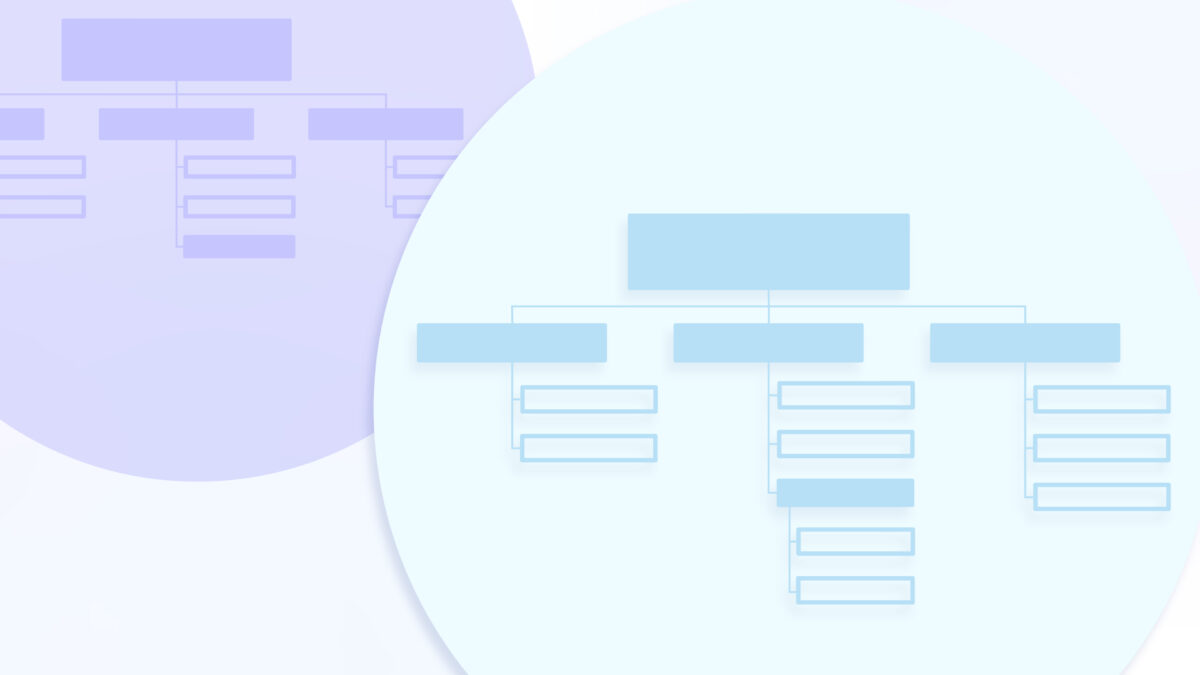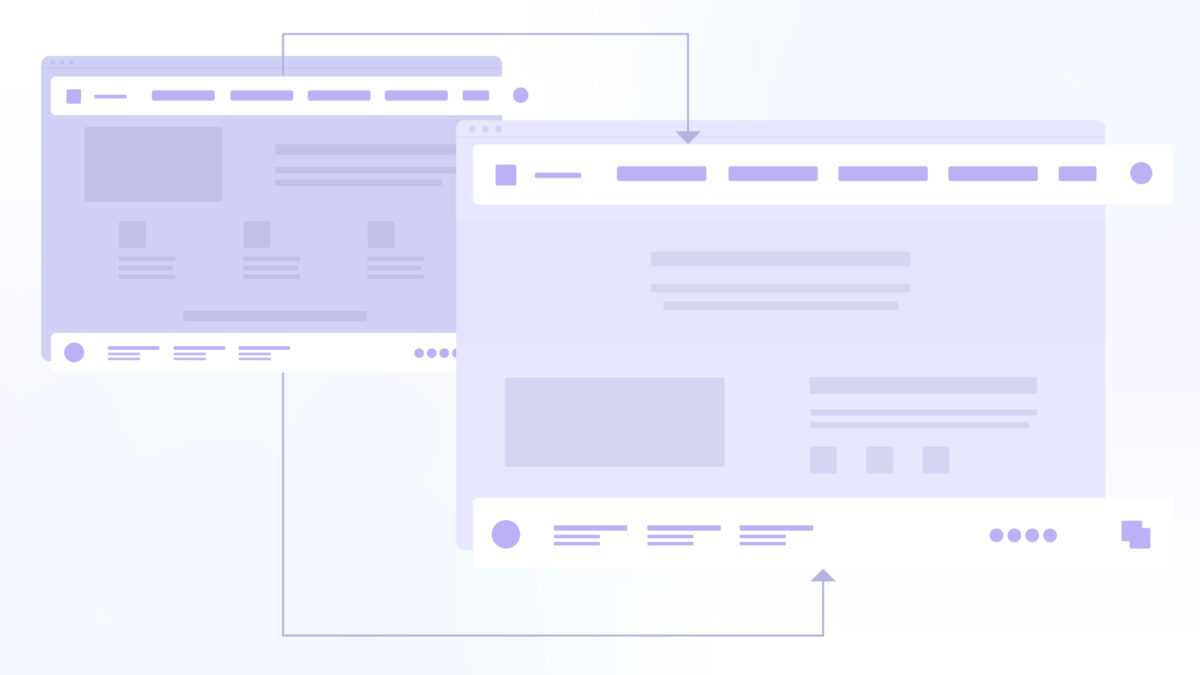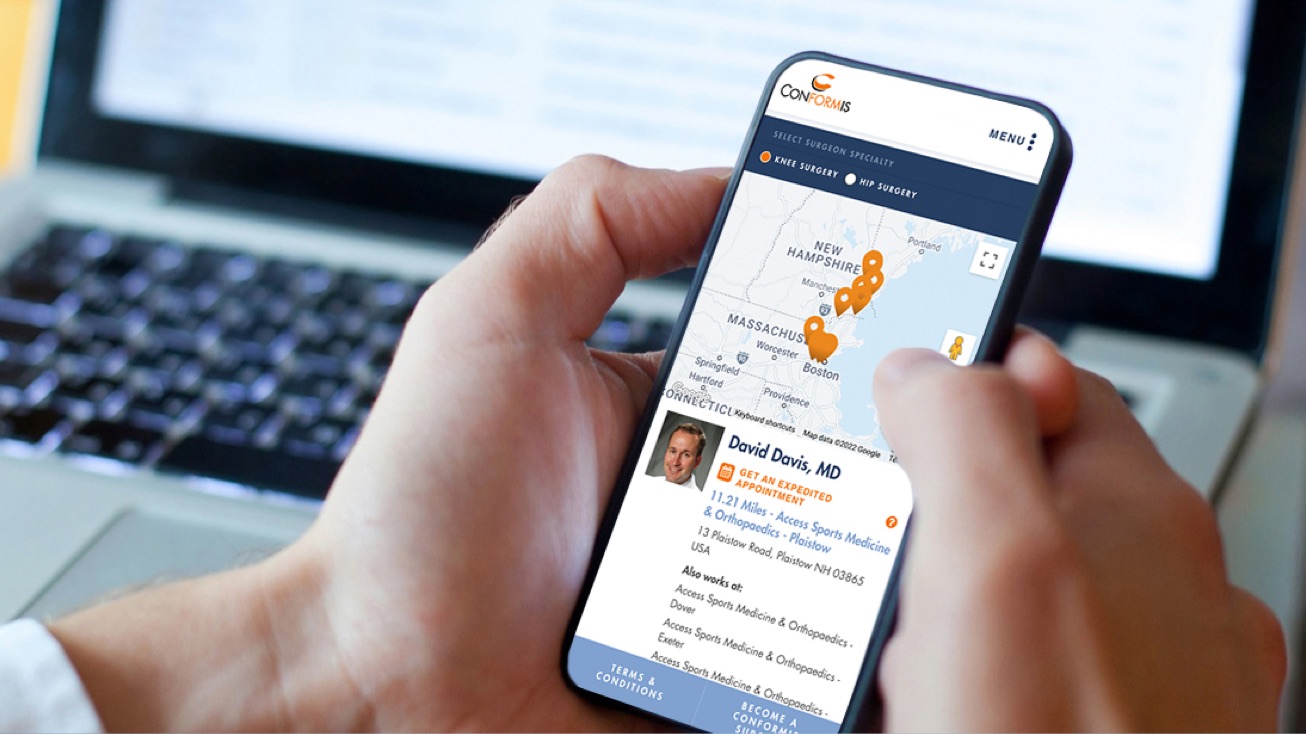Table of Contents
- About Progressive Website Replacement (PWR)
- How PWR works
- Benefits of PWR
- Who PWR is for
- Challenges with PWR
- FAQs
- How to get started
Running into roadblocks on the path to a new website redesign?
You’re not alone—for industry-leading companies bringing thousands of visitors onto their site each day, the launch of a new website is a huge undertaking with a ton of ramifications.
If you’ve been in a similar situation, these sentiments might feel familiar:
“We want to invest in building new features into the website, but the current architecture is outdated. Is this wasted money?”
“I’m leading the new website project- if we launch and our conversions tank, I’ll lose my job!”
“We don’t just need to redesign the site… we need to update all our content. This might take us years! And when we finish, some of the content will already be outdated… what do we do?!”
That’s why so many new site builds end up as a search for ways to cut timelines and costs—sometimes by sticking with existing (and outdated) technology, or by sacrificing important features in the name of shorter timelines.
Too often, the rush to launch a half-finished MVP version or to make sacrifices on your new site can come with risks:
- Untested impacts on SEO and conversion rate
- Creating a clunky, inconsistent digital experience
- Sinking further into tech-debt with outdated site architecture and technology.
Why do so many companies still struggle with these new website woes? Because they’re thinking of the site launch as one, huge event—and it doesn’t have to be.
That’s where Progressive Website Replacement (PWR) is changing the way we think about “new websites” — all for the better.
PWR is DI’s custom software and refined process which facilitates the replacement of your site, piece by piece. We’ve been building and refining for years, combining a proven methodology for a smart, staggered launch of a new website with proprietary tech designed to simplify, minimize risk, and maximize the value of a new website project.
What is progressive website replacement (PWR)?
Think about PWR as a section-by-section (or even page-by-page) approach to rolling out a new website.

Instead of going through the entire process of rearchitecting, redesigning, rewriting, and launching an entirely new site all at once, our PWR process allows businesses to replace just one or two “sections” of the website at a time.
By basing our process on patterns and re-configurable modules, we help major organizations deploy a new site piece-by-piece—all unified by a new global navigation, which allows us to bridge the gap between “new” and “old” content in one seamless experience.

The result: a fully relaunched site that’s easier to manage, built for the future, and (most critical) that minimizes the risk of launching an entirely new site all at once.
If this approach sounds familiar, that’s because it follows a similar philosophy as The Strangler Pattern, a methodology for “gradually replacing a legacy system with a modernized version while maintaining the existing functionality.” It’s a technique that helps mitigate risk while maintaining continuous functionality during scalable, agile development.
Through the PWR process, we combine the Strangler Pattern with our custom process and technology stack to make launching a new, updated site both accessible and easy to implement .
How does PWR work?
The PWR process combines a proven process for project management and website strategy with our unique tech solution for serving new experiences side-by-side with existing sites.
By hosting the new website—with its new branding and new content—on a second CMS install, our plugin can seamlessly divert traffic to new pages on a page-by-page, pattern-by-pattern, or even section-by-section basis.
Plus, because the URLs of pages on the new and legacy site are identical, the user (as well as analytics platforms) see them as a single unified experience.
The result: only the new, ready-to-launch pages are served to an audience at any given time, while the remainder of the site stays unchanged until it’s time for rollout.
Different content versions, one unified navigation.
Obviously, there are some tricky pieces of the PWR puzzle, but one major question tends to stand out:
“How do you keep the experience consistent between new pages and the old experience?”
Luckily, our team created the process—which means we’ve also figured out the right way to roll out each new section of the site while keeping the experience seamless and effective.

We start with a new navigation and footer on both the new and old sites.
The process of refreshing the navigation can be a major strategic driver for the entire new website.
By aligning on the ideal navigation early, we can ensure the new site captures the structure and user experience needed across all sections of the site.
But here’s the thing: you don’t need to update every link in the navigation all at once.
By fusing the new navigation structure with the existing site content, we can roll out the new site piece-by-piece without drastically departing from user expectations.
Not only does that simplify the transition from old to new, but it also helps set the foundation to keep all stakeholders aligned on what the final experience will look and feel like.
New content, deployed section by section.
As new site content is produced and becomes ready for publication, we can deploy that new experience to users on a rolling basis—rather than waiting for every single page across the site to be finalized and populated.
Our technology allows us to select which website pages should serve users the new experience, and which pages should continue to serve the legacy website.
That way, we can deploy the new look and feel that users can start enjoying immediately—all while protecting other crucial conversion points as we test and refine our UX hypotheses.
Eventually, when all new content is finalized and ready for launch, we can simply push everything out to your audiences seamlessly.
What are the benefits of PWR?
Progressive website replacement is an Innovative approach for big companies who need to show lift in the short term—but who also don’t want to sacrifice more changes in the future just to get something up now.
By launching a new website progressively rather than in one big event, companies can achieve some major benefits that will empower the site on launch day and beyond.
- Get a new site fast—even on an extended timeline. By rolling out new pages and new sections of the site one-by-one, companies can get all the short-term benefits of a new brand experience for the most valuable business segments.That means your most important users get a great experience first—or your best-selling product gets a great new page—and the knowledge gained from these can help guide the best execution for all future pages.
- Deploy a new modern CMS that’s more resilient. So many major companies struggle to manage websites that are built on outdated infrastructure. That can make adding or changing content difficult to impossible—even for the addition of just one important new feature that needs to go live before the rest of the site..By replacing single site sections on new technology one-by-one, companies can free themselves from that tech debt and bolster their site security through an efficient and strategic rollout.
- Protect conversion rates & SEO through a new site launch. Rolling out an entirely new website all at once requires some major hypotheses about your users’ needs and wants. In some cases, this can introduce serious risk for your SEO and conversion rate.But by deploying a new site in sections, companies can refine and optimize each section to protect performance while deploying new look, feel, and architecture. If even one of the stage rollouts leads to any business decline, the overall impact will be relatively minor.
- Build a new experience on (almost) any platform, seamlessly. Our PWR process and technology is (mostly) CMS-agnostic. That means there’s a very good chance we can connect your new site with your old site on almost any CMS.That means you can stagger the launch of new pages regardless of whether you’re on WordPress, Craft, Drupal, Expression Engine.
Who is PWR for?
Our PWR process can really work for any business of any size. Basically, if you need a new site, this approach might just be your best option.
But there are also a few kinds of businesses who are best suited for this approach, and they often share similar challenges:
- Businesses who need a new feature on their site, but who can’t justify investing in building onto their old architecture.
- Highly conversion rate-focused companies who can’t risk the potential of even a slight conversion drop in the rollout of a new website.
- Companies who need to show progress in compliance (such as ADA compliance), and who can’t wait to rollout a new site many months down the line.
- Large global companies that have many internal stakeholders, which can slow large projects to a crawl—meaning the final products are outdated by the time they launch.
Here’s the thing: no matter how big or small your website, the risks of launching untested hypotheses and new features are still very present.
By staggering the launch of new pages and sections through our PWR process, businesses of all sizes can maximize the efficiency of their new website launch.
Any downsides to PWR?
We built the PWR process to minimize risks across the launch of a new website. But there are still a few possible impacts every business should consider when choosing this approach.
- Technically, you’re maintaining two sites. While this will add hosting costs to maintain two CMS installs—but it’s also going to save you significant time and money during future website updates thanks to our modular system of page development.After the initial build is complete, you can also sunset your original CMS install, meaning that cost won’t continue into the future.
- Your new website experience still has to be an execution of the brand. Even while we’re deploying new pages and sections, it’s still critical that all new content still provide a consistent user and brand experience.Our proven project management process, combined with our seamless design and development process, makes this easy—but it’s a critical piece that can’t be overlooked.
- It may take more time and money overall—but that cost can be spread more effectively. Even though this process requires longer timelines, the money spent can be spread out over a longer timeframe (or even turned into a monthly retainer).For many companies, this makes the process even easier to swallow, and to communicate to procurement departments and/or core decision makers.
FAQs
Still have questions about the PWR process? We’ve got answers.
Here are some of the most common questions we get from clients about PWR—and they’re all worth considering.
Are all the new pages on the same domain name, or a different one?
Same domain—users won’t be able to tell if the page they are looking at is coming from the “new site” or “old site”. Our proprietary PWR tech allows us to seamlessly swap in the new experience at a page-by-page level, without requiring different domains or URLs.
Users will hit the exact same URL they always have—only this time, with a new experience that’s better than ever before.
Won’t this look like 2 different sites mashed together?
Not if we can help it. By creating a smart, strategic roadmap for the rollout of new pages and website sections, we can build totally refreshed experiences for your most important users—while other users might not even notice a single change.
Plus, by uniting new and old pages within a single updated navigation, we make the entire site experience still feel cohesive and seamless… even if the actual on-page content is undergoing transformations behind the scenes.
Won’t this impact my SEO & conversion rate?
One of the most important benefits of the PWR process is that it keeps the most important SEO content largely in place, even as new pages are being launched.
Since all the old and existing site content remains on-site until it’s replaced, your site can maintain its strongest SEO presence where it matters most until the launch date.
Plus, since we can test each page as they’re rolled out, we can work together to ensure any changes in traffic or conversions are addressed and refined as we go.
Think about it like new site CRO—only it starts much earlier, and doesn’t have to wait for the entire site to be live before we start analyzing and adjusting.
Won’t this impact my tracking?
Since both sites will be live and served simultaneously, we take steps to ensure all tracking and analytics (like GA4) are thoroughly integrated and validated as new pages go live.
That means any negative impacts to tracking can be considered and mitigated—while all the benefits can be deployed faster than ever.
Ready to PWR your site to the next level?
Rolling out a new website is no small thing, and making compromises can have major impacts.
But with progressive website replacement, the finished website can be even better, more powerful, and more effective.
If you’re interested in learning more about our PWR process—or if you’re ready to start exploring this approach for the launch of your new website—get in touch with our team. We’d be happy to take a close look at your site, and start strategizing the right way to upgrade your digital footprint.






